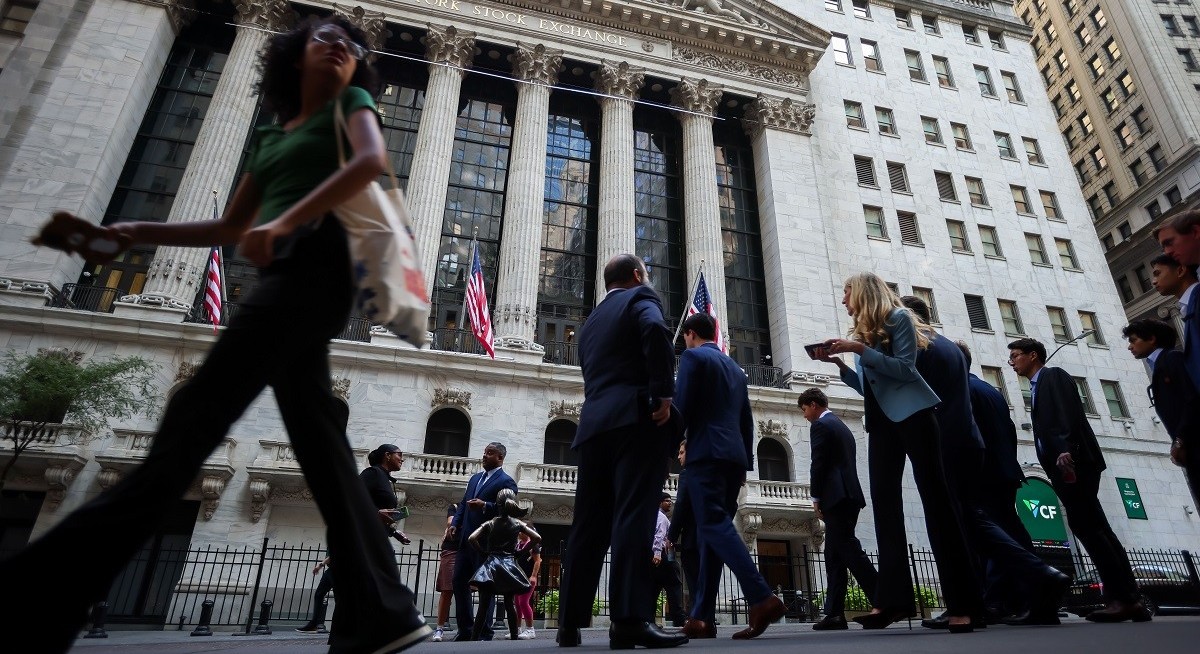The bank estimates that investors have about US$74 billion more cash to reinvest than there have been bonds sold by companies. Without enough new notes to buy, money managers are turning to the credit derivatives market to make up the difference, gaining exposure to more than US$110 billion of debt through the main North American high-grade credit-default swap index, according to DTCC data compiled by Barclays Plc.
That’s near the highest in at least three years.
“The money keeps coming in, and it needs to be invested,” said Travis King, head of US investment-grade corporates at Voya Investment Management. Valuations are so lofty now that many fund managers aren’t taking huge risk relative to their benchmarks, he added.
See also: China smashes bond sale records with over US$234b of bids
Investors Sell Credit Protection At Increasing Pace | Positions are around the highest in at least three years
Those high coupon payments probably won’t last long term as the Federal Reserve lowers interest rates, like it did in the latest week while signaling two more reductions later this year.
But for now, money managers have ample funds to invest. They’re expected to earn US$465 billion from coupons this year, and US$517 billion next year, JPMorgan Chase & Co estimates. Both years would be the highest since at least 2018, with more room to grow in the future. While rates have been high only for about three years, the market’s weighted-average maturity is closer to 10 years, JPMorgan said.
See also: Amazon seeks US$12b from first US bond sale in three years — Bloomberg
The relentless demand is helping to pull risk premiums in the secondary market to multi-decade lows. Spreads on US high-grade corporate bonds shrank to just 0.72 percentage point on Thursday, the lowest since 1998, according to Bloomberg index data.
Selling Protection
To gain exposure to corporate debt via derivatives, money managers usually sell credit default protection on indexes, generating income in the process. Selling credit default protection is also a bet against volatility for many investors.
The strategy has become more popular in recent months, with selling positions on CDX — the main investment-grade index — up about 29% from a year ago, the Barclays-compiled data shows.
Buying and selling CDX “helps you to manage the overall beta of your portfolio,” said Steve Boothe, head of investment grade at T. Rowe Price.
The derivatives are becoming popular partly because companies have been reticent to sell more debt than they have to while interest rates are elevated, particularly with rates expected to fall in the coming months. High-grade yields, while declining recently, are still about a percentage point above their 10-year average.
Debt sales to fund acquisitions, another source of positive net supply, have also been muted this year. There’s hardly a drought in bond sales, but demand from investors is strong enough that supply isn’t keeping up.
Some market participants have been funneling their cash into the pockets of opportunity they do see in the primary market. Most investors still prefer to gain exposure through cash bonds, but have been left with little choice except to put it to work outside of those, making CDX look like a suitable liquid alternative.




